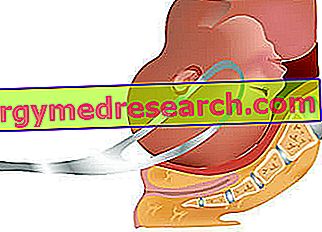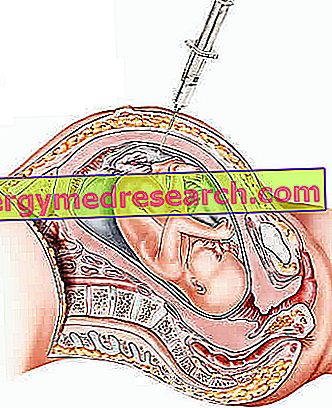Generality The forceps is an obstetric instrument similar to a double spoon shaped forceps, used to extract the unborn child's head from the vagina taking it by the head. For the possible complications that can derive from the improper use of the forceps, for several years now its use has been bound in quite exceptional circumstances and to a large extent replaced by cesarean section
Category pregnancy
Nausea in pregnancy or nausea gravidica is a symptom that typically occurs in the first phase of gestation (first 3 months). Very annoying and sometimes limiting (especially when it evolves in vomiting), it is considered the most unpleasant inconvenience to face during the interesting state. It appears as a malaise that affects the stomach and esophagus
Generality Alpha-phetoprotein (AFP) is a glycoprotein substance produced from the earliest stages of pregnancy by the yolk sac first and then by the fetus. During intrauterine life, the unborn child synthesizes AFP especially at the hepatic level, with a marginal contribution from the kidneys and the gastrointestinal tract
Body changes in pregnancy alteration of posture (lordosis develops in the spine altering the center of gravity); change in the center of gravity (breast augmentation causes dorsal kyphosis); weight gain with: - elevation of the diaphragm (due to the growth of the uterus): increases the effort in breathing and decreases sports performance; lateral expansion of the thorax with increased thoracic breathing because the diaphragm cannot fully contract; 25% increase in oxygen consumption due to greater weight (therefore it is more difficult to perform muscle activity); increase in respiratory rate (i
What is Amniocentesis? Amniocentesis consists of the extraction of a small amount of the amniotic fluid via the abdominal route, which envelops and protects the fetus during growth and development. In the womb, the fetus is housed inside a sac, called the amniotic sac or amnios, filled with a fluid - the amniotic fluid - that protects it from impacts, temperature changes and pressures of various kinds
Normal weight of a newborn At birth, the average weight of a human being varies from 3200 to 3400 grams, while the normal range extends between 2.5 and 4.5 kg (for more information, see the article dedicated to the topic "weight at birth"). Weight loss after birth After the birth, in the first week of life, the weight gain of the newborn is negative; in the first few days, in fact, there is a quantifiable weight loss of 5-10%, linked to stress induced by childbirth and the loss of fluids with faeces (meconium), breath, sweat and urine
To learn more: duration of pregnancy 1. What do you want to calculate? An estimate of the date of conception and of the theoretical birth The first day of my last menstrual flow Date of conception based on the actual or supposed date of birth 2. Enter the first day of your last menstrual flow: 2. Enter the presumed birth date: 2
What it is and what it is used for Cardiotocography - from the Greek tokos , birth, and graphein , to write - allows you to monitor fetal heart rate and uterine contractions . For this purpose, an apparatus called cardiotocograph is used, consisting of a central box and two probes placed on the mother's womb: the first is an ultrasound detector of the heartbeat (connected to the point where the perception of the heart is more high), while the second consists of a mechanical meter of uterine contractions (this pressure transducer is positioned lower down, in the area corresponding to the ute
What is Cervical Insufficiency? One speaks of "cervical insufficiency" when - due to a structural or functional defect, congenital or acquired - the cervix is unable to support a pregnancy until its end. In other words, the cervix has a weak and poorly toned structure, which does not allow it to remain closed for the duration of the pregnancy. Ri
Generality The caesarean section scar is a sign that results from the surgical incision of the abdomen and uterus wall, which has as its purpose the extraction of the child from the womb. This cut can extend in a transverse or longitudinal direction. For many women, the caesarean scar is a more or less obvious imperfection with which to live; other times, on the other hand, it is associated with complications (such as keloids, hernias or adhesions) that make the presence particularly annoying
Generality A safety belt during pregnancy is a restraint that future mothers must continue to use when they are driving a car. Unlike what some women think, in fact, the safest way to travel and move is by remaining tied to belts. According to the article 172 of the Highway Code , the exemption from the use of seat belts is foreseen only in particular risk conditions, certified by the treating gynecologist










